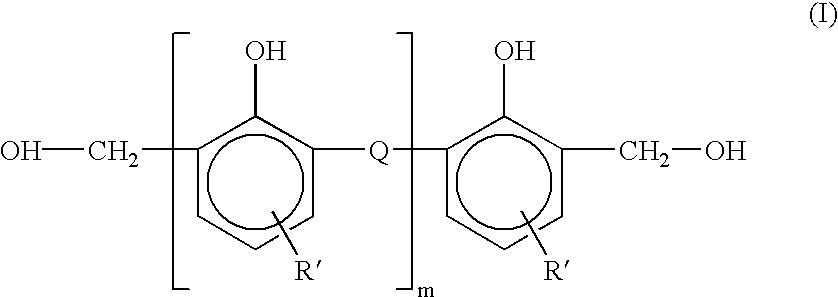Thermoplastic vulcanizates and process for making the same
a technology of thermoplastic vulcanizates and thermoplastic vulcanizates, which is applied in the field of thermoplastic vulcanizates and process for making the same, can solve the problems of thermoplastic vulcanizates, attract and absorb atmospheric moisture, and solubility and corrosion problems, so as to reduce the hygroscopicity of the resulting thermoplastic vulcanizates, reduce mold fouling and corrosion, and reduce the effect of halid
- Summary
- Abstract
- Description
- Claims
- Application Information
AI Technical Summary
Benefits of technology
Problems solved by technology
Method used
Image
Examples
example i
In this first example, the following ingredients were used. The rubber that was employed was EPDM rubber that was purchased under the tradename Keltan P597 (DSM). This EPDM rubber composition contains about 100 parts by weight of a processing oil per one hundred parts by weight rubber. The thermoplastic polymer was purchased under the tradename D008M (Artistech). The filler that was employed was a clay that was purchased under the tradename Icecap K Clay.TM. (Burgess Clay; Atlanta, Ga.). The phenolic resin was an alkylphenol-formaldehyde resin that was purchased under the tradename SP1045.TM. (Schenectady International). With respect to the catalyst system, the convention employed in the following tables identifies the catalyst system by way of the metal of the metal halide, followed by the metal of the metal carboxylate if distinct from the metal halide, followed by the halide ion, followed by the acid residue of the metal carboxylate. Accordingly, a catalyst system formed by the c...
example ii
A second experiment was conducted with ingredients that were similar to Example I except that different metal carboxylates were used.
example iii
A third experiment was conducted with ingredients that were similar to Examples I & II. In addition to the testing described above, the samples of this experiment were also subjected to heat aging for one week at 150.degree. C. and then analyzed for hardness, tensile strength, elongation, and modulus as described above. Furthermore, the samples of this experiment were subjected to testing to determine moisture pick-up by subjecting the samples to an environment having 81% humidity at 23.degree. C.
PUM
| Property | Measurement | Unit |
|---|---|---|
| Percent by mass | aaaaa | aaaaa |
| Percent by mass | aaaaa | aaaaa |
| Mass | aaaaa | aaaaa |
Abstract
Description
Claims
Application Information
 Login to View More
Login to View More - R&D
- Intellectual Property
- Life Sciences
- Materials
- Tech Scout
- Unparalleled Data Quality
- Higher Quality Content
- 60% Fewer Hallucinations
Browse by: Latest US Patents, China's latest patents, Technical Efficacy Thesaurus, Application Domain, Technology Topic, Popular Technical Reports.
© 2025 PatSnap. All rights reserved.Legal|Privacy policy|Modern Slavery Act Transparency Statement|Sitemap|About US| Contact US: help@patsnap.com

